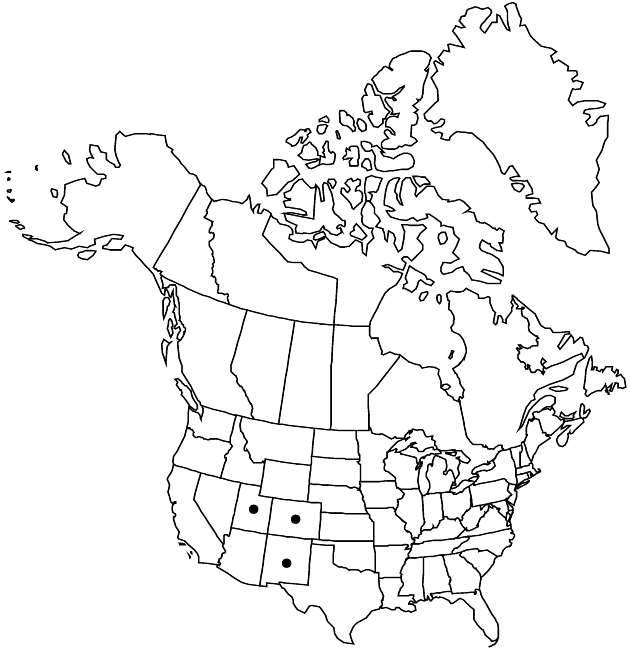Cirsium tracyi
Beih. Bot. Centralbl. 35(2): 424. 1917.
Perennials, 50–200+ cm; tap-rooted. Stems 1–several, erect or ascending, thinly gray-tomentose or ± glabrate; branches few to many, ascending. Leaves: blades elliptic to oblong, 8–40 × 1–12 cm, margins weakly to strongly undulate, spinose-dentate or shallowly to deeply lobed, lobes ascending to spreading, ± triangular, mostly well separated, spinulose and coarsely dentate or cleft into 2–3 lanceolate to triangular, often entire-margined, spine-tipped divisions, main spines 2.5–7+ mm, abaxial faces densely gray-tomentose, adaxial thinly tomentose; basal sometimes present at flowering, winged-petiolate; principal cauline becoming sessile and progressively reduced distally, widest at bases, bases ± auriculate-clasping to short-decurrent; distal cauline reduced, often spinier. Heads 1–many, terminal on branches and often in leaf axils, in leafy, ± corymbiform arrays. Peduncles 0–10+ cm. Involucres ovoid to hemispheric or broadly campanulate, 2–3 × 1.7–3.5 cm, loosely arachnoid on phyllary margins or glabrate. Phyllaries in 6–10 series, imbricate, ovate to lanceolate (outer) to linear-lanceolate (inner), margins entire, abaxial faces with prominent glutinous ridge; outer and middle appressed, spines spreading, slender to stout, 2–6 mm; apices of inner often flexuous, narrow, flat, ± entire, spineless or tipped with weak spines. Corollas white to lavender or pink-purple, 23–30 mm, tubes 9–14 mm, throats 5.5–10.5 mm, lobes 5.5–9.5 mm; style tips 4–7 mm. Cypselae light to dark brown, 6–7 mm, apical collars colored like body or rarely yellowish, narrow; pappi 20–23 mm, usually noticeably shorter than corolla. 2n = 24.
Phenology: Flowering late spring–summer (Jun–Aug).
Habitat: Dry slopes, sagebrush deserts, pinyon-juniper woodlands, openings in montane coniferous forests, often in disturbed areas
Elevation: 1400–2900 m
Distribution

Colo., N.Mex., Utah.
Discussion
Cirsium tracyi occurs from eastern Utah and western Colorado south in the Colorado Plateau and southern Rocky Mountains to northwestern New Mexico. Large-headed plants of Cirsium tracyi and small-headed individuals of C. undulatum are sometimes difficult to distinguish. P. L. Barlow-Irick (unpubl.) found that although there is much overlap in floral measurements of C. tracyi and C. undulatum, the means for some of these characters are statistically significant. Corolla lobes of C. tracyi, for instance, average about 7 mm and those of C. undulatum about 10 mm. The species differ in chromosome number as well.
Selected References
None.